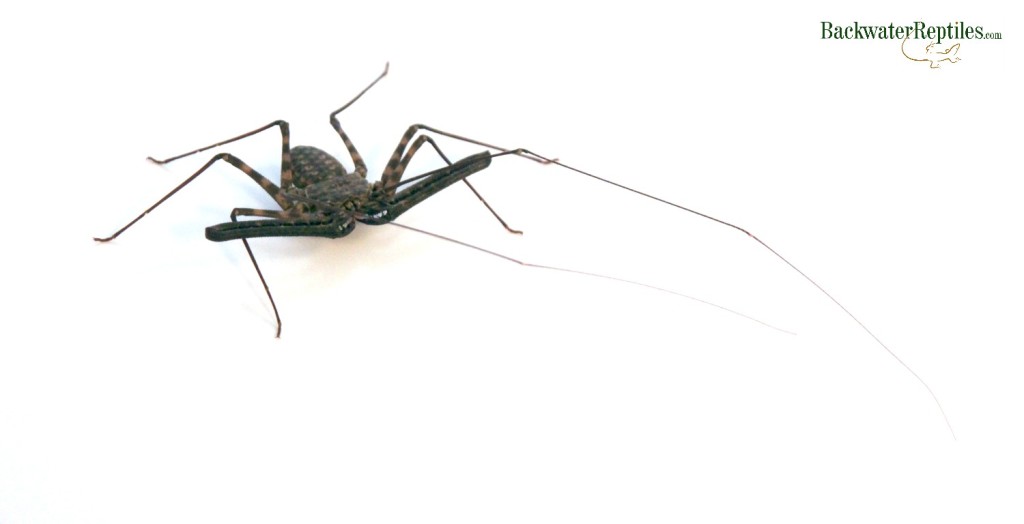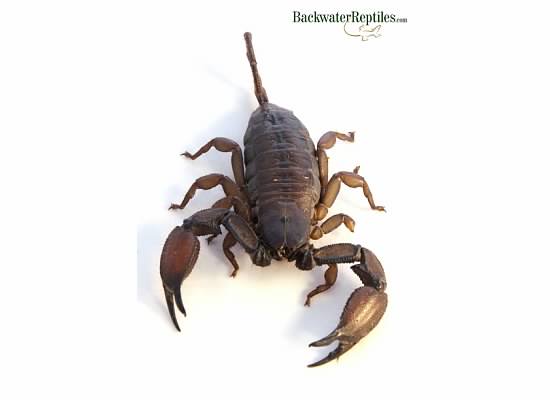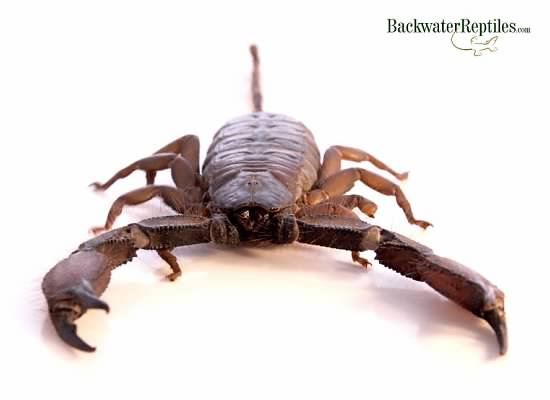Even if you haven’t taken steps to breed your pet scorpion, it’s possible to receive a new pet scorpion and – lo and behold – it’s a girl and she’s gravid. By the way, when a scorpion female is going to have babies, we don’t call her “pregnant.” The appropriate term is gravid.
If you plan to keep mating pairs of scorpions in the same enclosure or you happened to discover your female scorpion is gravid, then read on to have these frequently asked questions addressed:
-How can I tell which gender my scorpion is?
-How do I know if my pet scorpion is gravid?
-How do I care for my gravid scorpion?
-What happens when my scorpion gives birth?
How can I tell which gender my scorpion is?
First of all, if you have a juvenile or very young scorpion, odds are it will be nearly impossible to distinguish the gender of the animal. Until they are fully mature, scorpions species of both genders tend to look nearly identical.

If you are dealing with a fully mature scorpion, there are several tricks used to determine the animal’s gender. You can assess the animal based on its physical traits. Females are generally larger than males with thicker, heftier bodies. Males tend to appear longer and skinnier with longer, thicker, or fuller pincers (AKA pedipalps).
You can also take a look at the underside of your scorpion at what are called pectines. These are a series of comb-like sensory organs that are visible on the last pair of legs closest to the tail. Males will have very long, defined pectines, whereas the female’s will be shorter. Place the scorpion on a see-through surface to look at the pectines. It’s not wise to try to flip the scorpion on its back as this could stress the animal and incite it to sting.
How do I know if my pet scorpion is gravid?
You can assume your female scorpion is gravid by witnessing actual mating behavior between two animals.
If you happen to see two scorpions whose pincers are locked together doing a sort of dance, you have just witnessed scorpions breeding. When scorpions mate, the male deposits a sperm packet on the ground and then drags the female over it. Hooks on the sperm packet latch onto the female’s genital opening and fertilization occurs internally.
If you haven’t actually seen your scorpions mating, you will probably notice a change in your scorpion’s physique. Like any pregnant animal, gravid scorpions will swell up due to carrying the babies internally.
A gravid female’s abdomen will enlarge, stretch, and even become semi-transparent. It’s not uncommon to be able to see the outlines of baby scorpions through her skin!
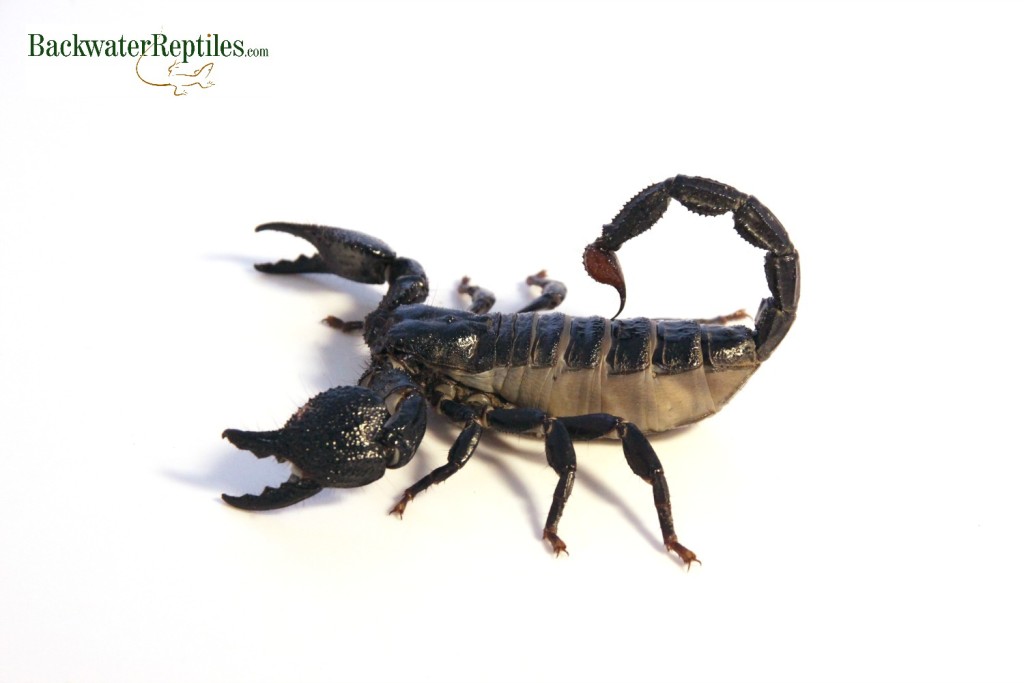
How do I care for my gravid scorpion?
Not a lot should change when caring for a gravid scorpion. Obviously, your scorpion will be very hungry, so don’t neglect to feed her regularly.
She might also be shier or more aggressive, so we recommend providing plenty of places for her to hide out if she doesn’t feel social. Keep the handling of her to a minimum as you don’t want to stress her out or risk being stung due to an unpredictable temperament.
Gestation can range from seven months to a year, so watch her closely as care requirements will need to adjust slightly once the scorplings are born.
What happens when my scorpion gives birth?
Most females will bear anywhere from eight to thirty babies. The scorplings are born alive as scorpions do not lay eggs.
The babies will be white or nearly transparent and will stay attached to the mother’s back until their first molt.
If you keep multiple scorpions in the same enclosure, be sure to remove all other scorpions once the babies are born. Don’t move the mother as this will stress her out unnecessarily. She will get aggressive, defensive, and stressed if other scorpions are present. Not to mention you don’t want any cannibalism to occur.
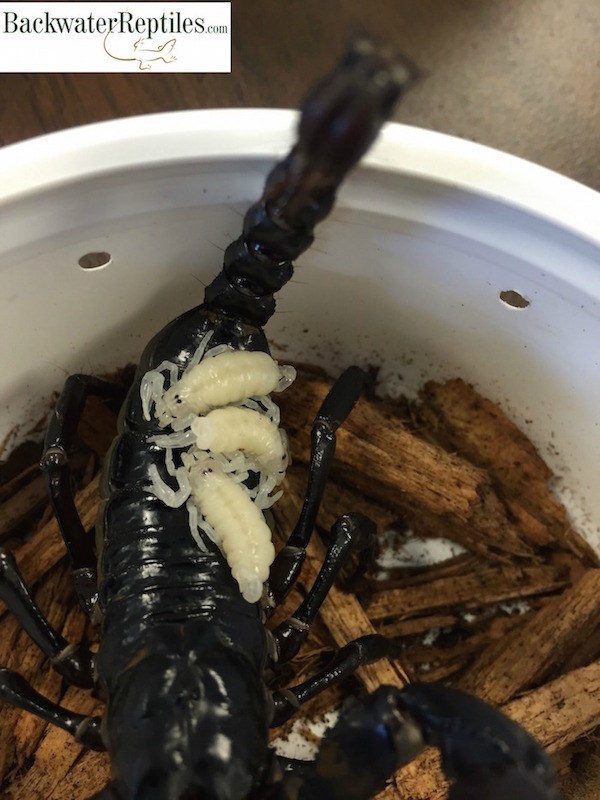
Never attempt to dislodge the scorplings from the female’s back. There is a high chance she will eat them if you attempt this. Plus scorplings that are raised by the mother fare much better and are healthier overall.
The baby scorpions will eat small insects. Pinhead crickets, small waxworms, and freshly molted small mealworms are all acceptable food for scorplings.
Conclusion – Gravid pet scorpions
Scorpion breeding will occur naturally if you house a mating pair together. Keep an eye out for swollen, stretched abdomens as this is the best way to tell if your scorpion is expecting.
Think you want to start a scorpion family of your own? Backwater Reptiles has quite a selection of scorpions for sale. You may end up with a gravid pet scorpion of your own!



